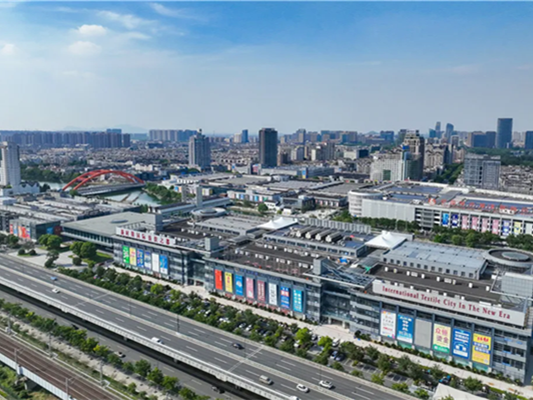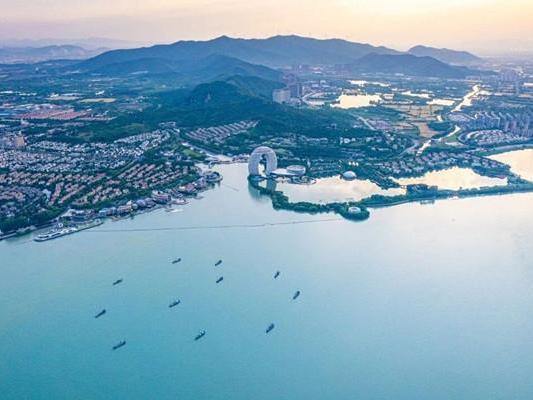良渚古城遗址公园于2019年7月8日,开始向公众开放。随着两扇大门徐徐打开,良渚文明穿越时空呼啸而来。
良渚古城遗址公园以一个怎样的面貌亮相在公众的眼前?遗址的保护与展示又如何做到相辅相成?
感受文明圣地
良渚古城遗址是实证中华五千年文明史的圣地,良渚古城遗址公园则是体验和感悟“中华五千年文明”的重要场所。
遗址公园地处杭州地区西北部,位于杭州市余杭区,凤都路与104国道交叉口北200米,距杭州市区约30公里,距杭州萧山机场约60公里。
公园规划总面积14.33平方公里,分城址区、瑶山遗址区、平原低坝—山前长堤区和谷口高坝区4个片区。
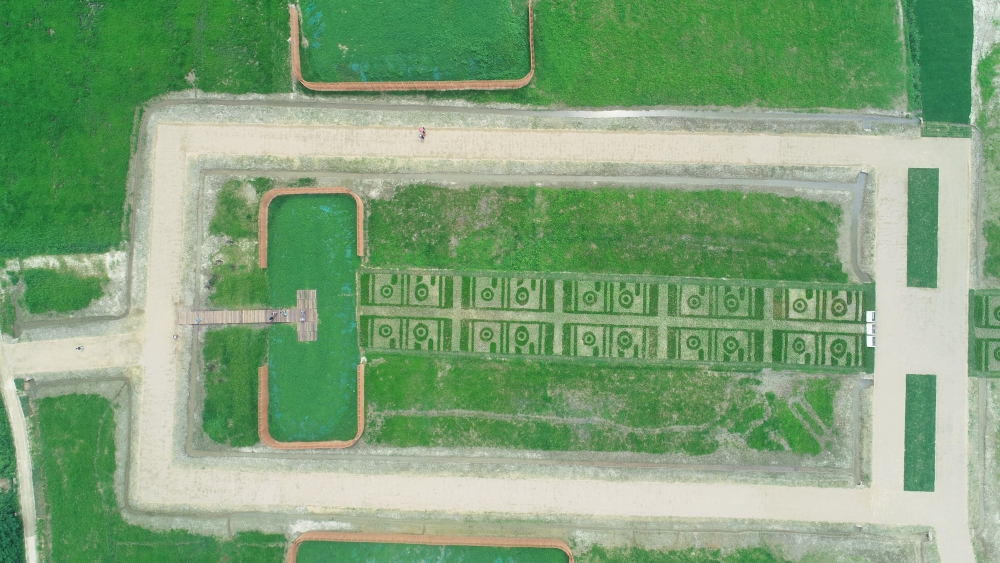
根据遗产价值阐释和访客基本服务需要,主要设置了城门与城墙、考古体验区、河道与作坊、雉山观景台、莫角山宫殿、反山王陵、西城墙遗址、凤山研学基地、大观山休憩区和鹿苑等十大片区。其中,反山、莫角山、城墙遗址等区域每天有定点定时的人工讲解。
如今的良渚古城遗址公园还大面积保留了原有的湿地生态系统。
公园内林木繁茂、水系纵横,园内套种了大量的水稻,吸引了许多珍贵鸟类前来栖息,充分反映良渚文化稻作文明的特点,展示了良渚古城时期的水乡泽国风貌。
据了解,良渚古城遗址范围有两个西湖那么大,目前开发的面积约是半个西湖大小。
多处遗址“打卡点”
作为国家考古遗址公园,良渚古城遗址公园集考古遗址本体及其环境的保护展示、教育、科研、游览、休闲等多项功能于一体,“秉承最小干预,给予遗址最好的保护,讲述5000年前的故事”。
古城城门
良渚古城营建于沼泽湿地之上,河网密布,水系发达。陆城门,是城址区目前发现的8座水城门、1座陆城门中的唯一一处陆路交通通道。三座隆起的高台,呈“品”字形结构,连续的城墙分为四个门道,宽度达150米。可以想象当年它的气派与巍峨。穿过宽大的门道,即可进入内城区域。
而水城门分布于城墙四面,每面城墙各有两座,城内、外河道经水门相接,构成了内外水网与水路交通体系。水城门一般宽30-60米,水城门两侧,矗立的仿木柱子,就是公园对水城门位置和宽度的展示。
南城墙发掘点
良渚古城城墙发现于2007年,城墙利用了自然地势,底部铺垫20-40厘米厚的石块,上部由取自山上的黄色黏土分层堆筑,全长6公里,宽度在40-60米之间。保存较好的地段,高约4米,不仅可以加固基础,还可以防止地下水对墙体的侵蚀。墙体上有土色明显的分垄现象,说明城墙堆土来自不同的地方。这种用石块铺垫,用黄色黏土堆筑城墙的方法,目前在世界同时代遗址中属首见。

湿地营城展示馆
考古研究表明,良渚古城内外古河道总长度约31公里,在古城外围兴建大型水利系统,在城内外有多条人工挖掘的河道,形成了复杂的水上交通网。良渚先民创造性地使用了垫石、堆筑、草裹泥以及护岸木桩等工艺营建古城,反映了人们在湿地环境中城市和建筑的特色。
另外,古城内外发现的码头、独木舟、竹筏等遗迹遗物,生动再现了良渚先民在水乡中生活的情景。
展示馆里展示了相应的考古出土物,以及考古模拟中心,孩子们可以在此处体验考古的乐趣,并从中了解5000年前良渚古国的生意盎然。
居址与作坊区
从湿地营城展示馆上车,路过良渚港,路的左侧便是“水城中的生活与劳作”展示馆。考古发掘研究证明,良渚古城内,20处人工堆筑的台地,是手工业作坊区,表明这里曾经居住着从事手工业的生产工匠。此外,古城内还曾发现过大量动植物遗存,考古研究显示,5000年前良渚先民们的饮食方式,与现今江南水乡的习惯非常接近。

展示馆里,金属群像复原了当时良渚古人的劳作场景。游客也可在此体验一把5000年前的工匠手艺活儿。
雉山观景台
雉山是自然山体,海拔30余米,位于良渚古城东北角,是城墙墙体的重要组成部分,连接着东城墙与北城墙。
与雉山对应的是凤山,位于城墙西南角,和雉山一起构成了古城的两个制高点。两座自然山体与人工堆筑的城墙有机地融为一体,显示出良渚先民卓越的城市规划能力。
宫殿区
这里是公园内金牌打卡点之一。五千年前,宫殿区就在此。莫角山台地位于古城中心,站在莫角山台地上,环顾四周一览无遗,有一种“王城尽在掌握”的感觉。高台上面建有大莫角山、小莫角山、乌龟山3个独立的宫殿台基,沙土广场和35座房屋基址。
根据考古现象分析,良渚先民在堆筑大莫角山台地时,首先在青淤泥上放置纵横交错的方木地梁,其上再堆筑黄土。方木地梁的使用保证了整个土台具有整体性和平衡性,也有效防止了台地上的宫殿出现不均衡沉降。
大木作雕塑
在莫角山宫殿区东侧的钟家港古河道内,发现了10余个长度10余米的大型木构件,大多加工平整。据考古推测,此区域很可能是木料等物资运往莫角山的码头,同时也是为宫殿建设提供木构件的加工厂。
这里的金属群像展现了当年良渚时期工匠们加工木料的场景。
反山王陵
反山王陵位于莫角山宫殿区的西北侧,两者仅一河之隔,却是良渚时期“良渚王”为自己身故后安排的去处。
反山墓地分南北两排,南排以居中的12号墓等级最高,北排以20号墓等级最高。位于墓地中心的12号墓,是反山等级最高的墓葬,随葬品也最为丰厚,出土了至今为止个体最大的玉琮和玉钺,分别代表神权和军权,证明了墓主人尊崇的地位和无上的权力。
反山王陵展示馆内展示了王陵的前世今生——自1986年以来,考古工作者在反山遗址发现的11座良渚文化时期墓葬,以及出土的石器、陶器、玉器、象牙器、漆木器等1200余件(组)。
Archaeological Park Glorifies Ancient Liangzhu
An ancient society of people thrived for about 1,000 years from 3300BC to 2300 BC in Liangzhu in present-day Yuhang, a district of Hangzhou, on the northern side of the Qiantang River. The Liangzhu Culture influenced a big part of present-day China before it vanished mysteriously into history. Liangzhu Archaeological Park is now open to the public after the Archaeological Ruins of Liangzhu City was inscribed onto the UNESCO’s World Heritage List on July 6, 2019.
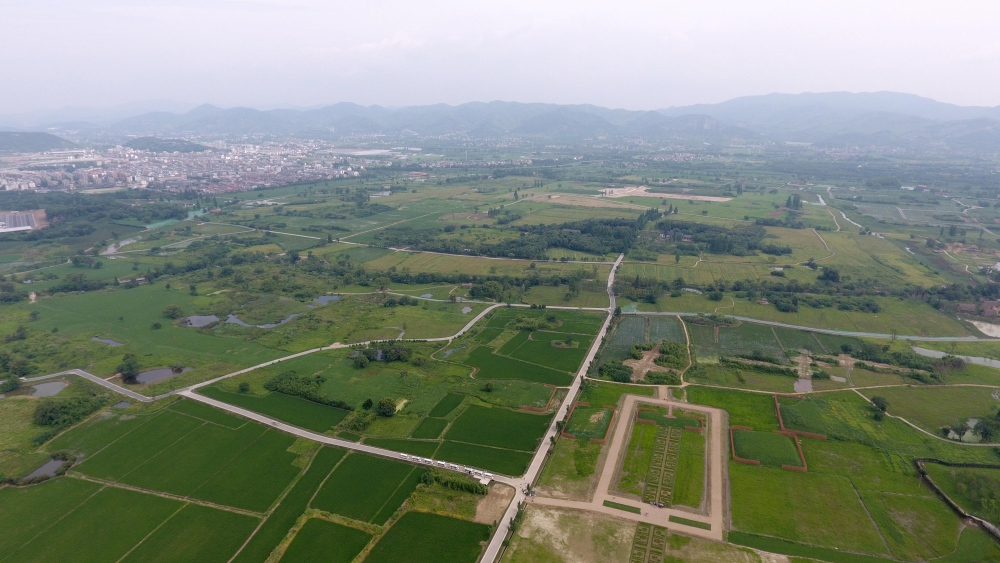
The scheduled size of the park is 14.33 square kilometers, including the Liangzhu City site as the 3.66-square-kilometer core of the whole park. At present, only about one fourth of the park is opened to the public and it admits a limited number of visitors on a daily basis. The park now comprises 10 sections, namely, the city gates and city walls, the hands-on archaeological section, rivers and workshops, the Zhishan Viewing Platform, the Mojiaoshan Palaces, the Fanshan Royal Cemetery, West City Wall ruins, Fengshan research and education base, Daguanshan Leisure Area, and Deer Park. Public narration service for visitors is available at the Fanshan Site, the Mojiaoshan Site and the city wall ruins at appointed times.
The Liangzhu City was built on low ground of marshes and rivers. The city was surrounded by rivers and ponds. Today, the park maintains a vast wetland after a preservation and restoration project, where rivers crisscross and thick woods stand. In order to highlight the rice agriculture that fed the ancient Liangzhu people, the park now has a large area of rice paddies, which attract large batches of birds.
The Liangzhu Archaeological Park stands out among similar parks for a reason: the park gives visitors a chance to see how archaeologists work at real archaeological sites and allows visitors to engage in interactions.
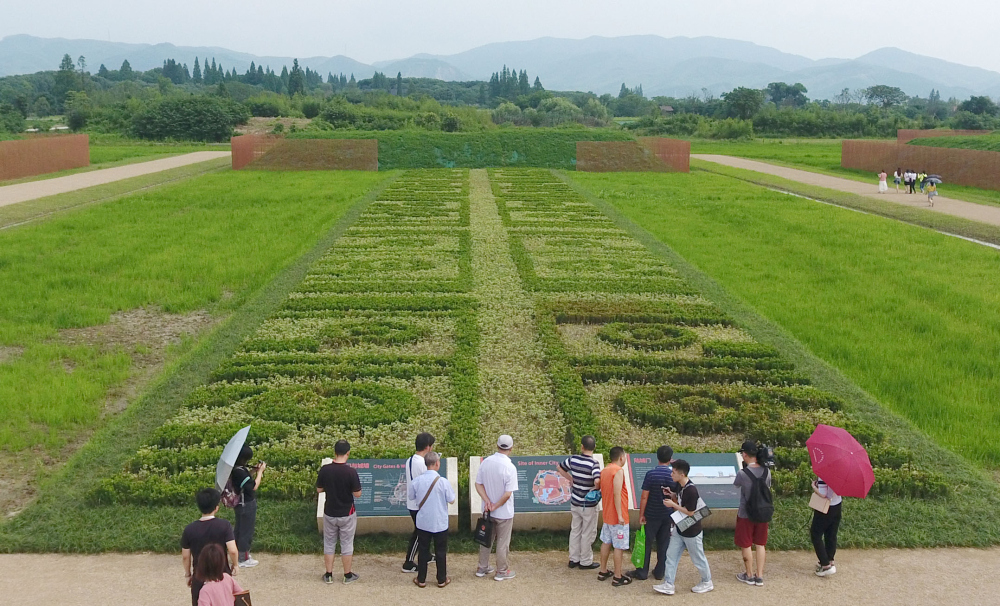
City Gates
The ancient city was built on the wetland crisscrossed by a wide network of rivers. The city proper was accessed by eight water gates and one land gate. The land gate had four entrances which are 150 meters wide. It is purely stately. Each side of the city wall is marked two water gates. The water gates are about 30 to 60 meters wide, connecting the rivers inside the city with the outside rivers. Today, imitation-wood pillars in the park indicate the position and width of these gates.
The Exhibition Section of
the Southern City Wall
The city walls of Liangzhu were discovered in 2007. The exhibition section shows what the original city wall looked like about five millennia years ago. The city wall took use of the natural topography. The foundation is a 20-40-cm layer of stones. Above the stone foundation are the layers of yellow clays, which were fetched from mountains. The wall is about 6 kilometers long and 40 to 60 meters wide. At well-preserved sections, the wall is about 4 meters tall. The city wall was designed and constructed for the purpose of convenient maintenance. The foundation could be fortified and the foundation could effectively prevent underground water from corroding the city wall. The soil layers of the wall show different colors, meaning the soil came from different places. The city wall made of stone foundation and yellow soil is the only one of its kind in the archaeological ruins of the same time around the world.
Wetland City-Building
Exhibition Hall
Archaeological studies conclude that the rivers in and outside the Liangzhu City add up to about 31 kilometers long. There was a large-scale peripheral water control system outside the ancient state capital. Some watercourse inside and outside the city proper were manmade. The rivers and the water control system form a complex network of water transportation. The people of Liangzhu invented some technologies in city building, as evidenced by manmade terraces, bank revetment of wood piles, stacks of grass-wrapped soil packs. The exhibition hall also displays the canoe, the piers, and bamboo rafts found in the ancient city. Inside the exhibition hall is a space where children can have hands-on experience of digging for archaeological finds and learning about ancient Liangzhu State.
Riverside Settlements
and Workshops
One part of the park is dedicated to settlements and workshops of the Liangzhu Culture. Take a short ride from the city-building exhibition hall and you reach another exhibition hall where you can see how ancient people lived and worked inside the city proper of Liangzhu. Archaeological studies conclude that there were about 20 manmade terraces where workshops were situated. The terraces were where people lived and worked as handicraft artisans. Moreover, a large quantity of animal and plant remains was found inside the ancient city. Archaeological studies indicate that the cuisine of the ancient Liangzhu Culture is much like the cuisine of Jiangnan of today. At this site, visitors can have hands-on experience of doing what people did five thousand years ago.
Zhishan Viewing Platform
Zhishan is a natural hill about 30 meters above sea level. Located in the northeast of the city proper of Liangzhu, it is a key part of the city wall, connecting the northern city wall and the eastern city wall. Opposite to Zhishan and at the other side of the city stands Fengshan in the southwest. The two hills connect city walls, showing the wisdom in urban planning and building.
Palace Complex
The Mojiaoshan Palatial Complex is a key attraction of the park. Five thousand years ago, it was home to palaces and the supreme leader ruled from there with a commanding view of the territory. The road to the palaces is now flanked by lotuses. The manmade terrace stands in majesty. On the terrace are three independent foundations which are known respectively as Big Mojiaoshan, Small Mojiaoshan, and Wuguishan. There are also a square paved with soil and sand and the foundations of 35 houses.
Big Mojiaoshan Terrace is a manmade structure. The foundation was paved with square wood blocks and yellow soil was then heaped on the foundation. The wood foundation was designed to keep the terrace stable and balanced so that no uneven sinking would occur to damage the palaces. About 13,000-kilogram charred rice was found in this area. An educated guess is that the charred rice was dumped there after a fire.
Big Wood Component Sculpture
Archaeologists unearthed 10 plus big timber building blocks in a river called Zhongjiagang, just to the east of the Mojiaoshan Palace Complex. It is conjectured that the place was probably a dockyard where building materials were stored and processed before they were shipped to the palace construction sites. A set of metal sculptures shows how craftsmen once worked at the wood processing site.
Fanshan Cemetery
Another key attraction of the park is the Fanshan Site. In 1986, over 1,200 sets of burial objects of stone, ivory, lacquer, and pottery were unearthed from two rows of tombs in the cemetery. Tomb 12 in the center of the south row indicates the person buried there was most important in the row. Tomb 20 indicates that the person buried there was the most important in the north row.
The total pieces amount to nearly 4,000 and 90% of them are made of jade. Tomb 12 in the center of the cemetery yielded 658 grave goods. Among the 647 jades uncovered there are the biggest jade and jade ever found in the Liangzhu territory.
In the park is an exhibition hall where visitors can take a closer look at everything about the royal cemetery.



